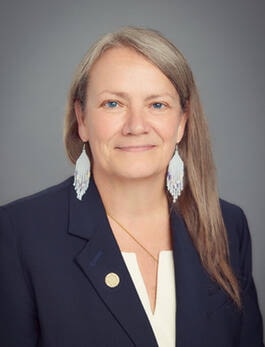Over the course of three days, more than 350 attendees at an Edmonton conference were provided with best practices for searching, protecting and preserving unmarked burial sites on former Indian residential school grounds and associated sites.
The event, called Inaugural National Gathering on Unmarked Graves: Supporting the Search and Recovery of Missing Children, included presentations from survivors of Indian residential schools, Indigenous communities leading this work across Canada, and experts in international law and mass burial repatriation efforts. Federal government officials and church representatives also shared their plans to actively support the recovery of the missing children.
The conference, which concluded on Sept. 14, was the first of eight planned events that will take place across Canada over two years. The next national gathering is being planned for November in Winnipeg.
In a document provided by the Office of the Special Interlocutor for Missing Children and and Unmarked Graves and Burial Sites associated with Indian Residential Schools, it’s stated that there is an “urgent need for legislative, regulatory and policy protections of former Indian residential school sites,” and that “there are significant gaps in legal protections at the federal, provincial, territorial and municipal levels.”
The Edmonton event provided a forum for people to discuss the topic.
Kimberly Murray, the independent special interlocutor, said, “The first national gathering on unmarked burials in Treaty 6 territory provided an opportunity for survivors, Indigenous families and communities to share knowledge about their efforts to search for and recover the missing children who were never returned home from Indian residential schools. At the gathering, survivors and communities listened and shared with one another.
“I heard from survivors, families and communities about their deep commitment to continue this sacred work of searching for the truth about what happened to the missing children, to locate their burials, and determine how to honour, respect and bring dignity to their spirits and help them journey home to their ancestors.”
The number of children whose remains have been detected at these unmarked grave sites over the past 16 months varies from approximately 1,600 to 2,200, depending on the source, but many other former residential school sites have yet to be investigated.
